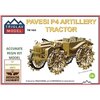- Joined
- Aug 25, 2024
- Messages
- 254
Enjoy. Plan. Make it happen and share it! In 1/72nd, 1/48th, 1/35th or 1/16th scale.
Yeah, everyone in the video is now passed on. Thru combat or natural causes. That is something to think about. Are you ready?
John 3:16
Yeah, everyone in the video is now passed on. Thru combat or natural causes. That is something to think about. Are you ready?
John 3:16
Last edited:

